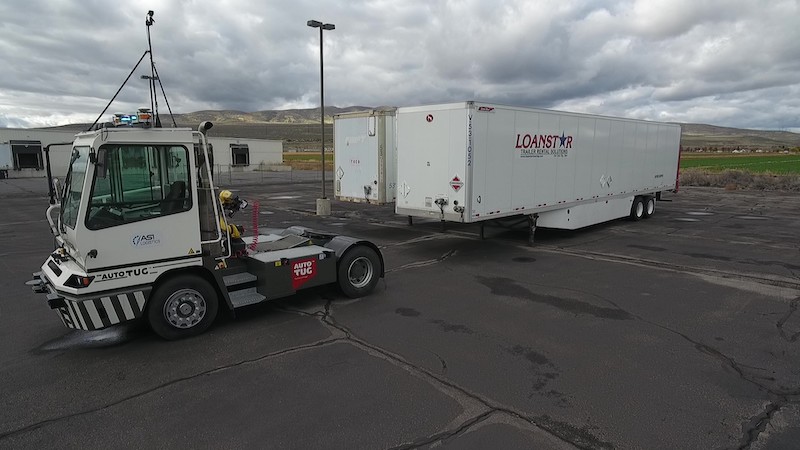
ASI and SICK optimize and automate logistics truck yard operations
ASI Logistics and SICK Sensor Intelligence say they have achieved another milestone in the development of autonomous yard truck operations.
Together, the two companies have “solved the issue of reversing into trailers autonomously”. This is one of the final steps in completing fully autonomous yard operations.
ASI Logistics utilized is robust Vehicle Automation Kit (VAK) and SICK’s industry-leading LiDAR to overcome this challenge.
Aaron Rothmeyer, product manager at SICK USA, says: “SICK recognizes that better autonomous vehicles are only possible with better sensor technologies. As such, SICK is continually innovating its product portfolio to take advantage of the latest tools and ideas.
“Our substantial experience with optical devices shows up in well-designed sensors all the way down to the component level. In addition, SICK is also heavily involved in the creation and updating of global safety standards, which is a critical step to ensuring autonomous vehicles’ continued success.”
For autonomously reversing into trailers to operate correctly a few technical details must b be known. The autonomous trucks must know the position and height of the trailer that connects to the trucks’ fifth wheel and locks the trailer to the truck.
The truck must be able to command the kingpin connection, and the truck must be commanded to reverse autonomously into trailers.
ASI Logistics leverages a state-of-the-art VAK to control its autonomous yard trucks. Inside the VAK is the trucks Vehicle Control Unit (VCU). The VCU commands all the truck’s functions when the truck is in autonomous mode.
Relying on quality data transmission from the sensors to the VCU is key to reversing into trailers autonomously. ASI utilizes two SICK LiDARs, the LMS1000 for kingpin position, and the TiM551 for kingpin height.
SICK has been developing optical products for industrial applications since 1946. With over 75 years of experience working in rugged environments, SICK delivers quality data even when conditions aren’t always ideal.
SICK’s LiDAR use light detection and ranging to target objects with a laser and measure the time that passes until the reflected light returns to the receiver.
This means LiDAR sensors can generate a 2D or 3D image with spatial and depth data for detecting, measuring, localizing, and tracking objects.
LiDAR sensors installed on robot arms, manned forklifts, and yard trucks provide greater efficiency, accuracy, and safety by simplifying and optimizing handling, transport, loading, and unloading, and material storage.
As the truck reverses, the two LiDARs detect where the trailer’s kingpin is and relay this information to the truck’s VCU. The VCU then commands the throttle, brakes, steering, and fifth wheel to continue to reverse safely into the trailer until a secure and safe connection to the kingpin is made.
Once the connection is made, sensors indicate that the truck has a secure connection and is now ready for the robotic arm to attach the necessary glad-hands and continue with the rest of the move.
This whole process is completed using ASI’s Mobius software. Mobius is the most advanced command and control software for autonomous vehicles in the world and is backed with over 20 years of industry experience and has millions of data testing hours behind it.
Mobius shows real-time vehicle movement, vehicle state, kingpin alerts, and robotic arm control all from a user that can be on-site or anywhere in the world.
ASI’s Mobius combined with SICK’s LiDAR offer huge potential to continuously deliver the most advanced autonomous yard truck solutions in the world.
